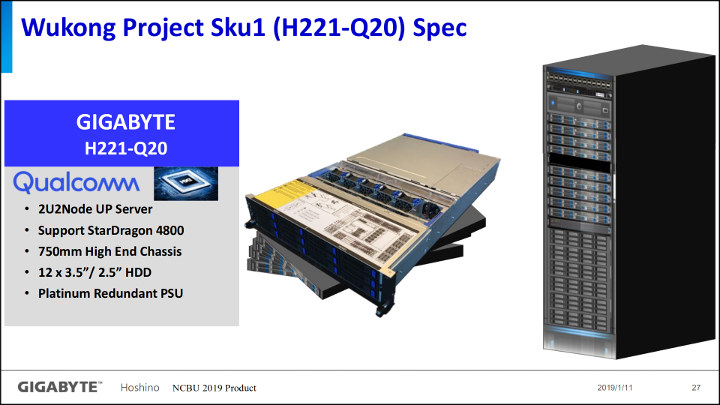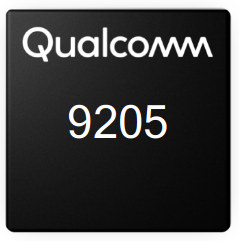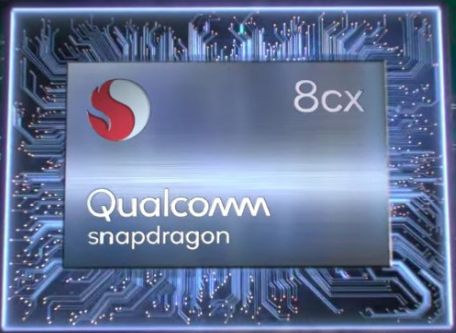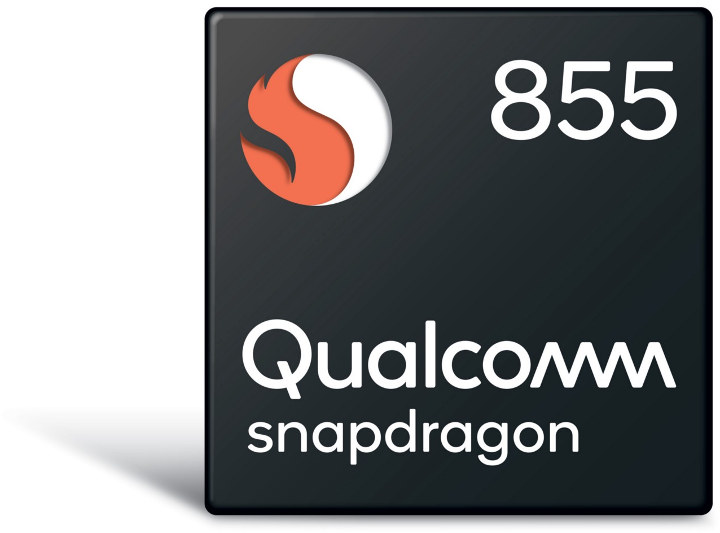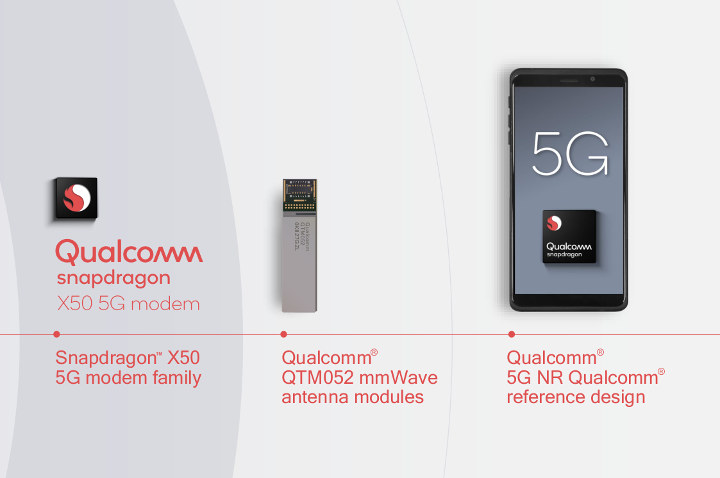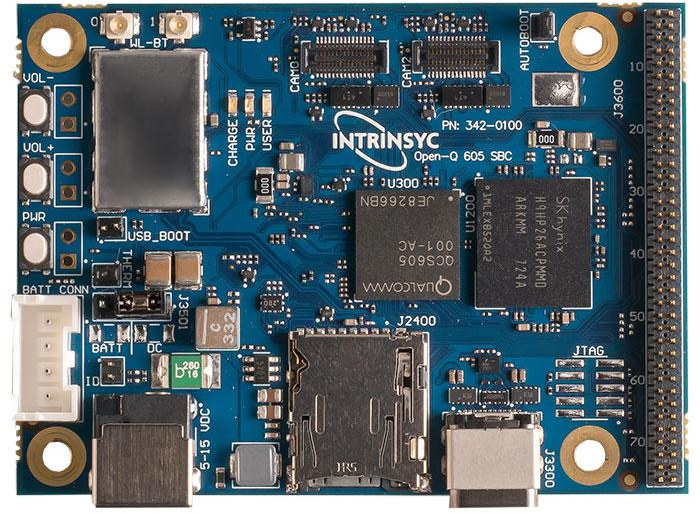Several 5G smartphones based on Snapdragon 855 processor and Snapdragon X50 5G modem have been announced, but AFAIK none have shipped to end users. But Qualcomm has already announced their second generation 5G NR (New Radio) modem with Snapdragon X55, which the company claims is “the world’s most advanced commercial multimode 5G modem”. Manufactured with a 7-nm process, Snapdragon X55 is a single-chip modem that supports 2G, 3G, 4G, and 5G NR mmWave and sub-6 GHz spectrum bands with up to 7 Gbps download speeds and 3 Gbps upload speeds over 5G, and up to 2.5 Gbps download speeds over LTE (Category 22) The model supports TDD and FDD modes, is capable of Standalone (SA) and non-standalone (NSA) network deployments, and can handle dynamic spectrum sharing delivering both 4G & 5G services dynamically. The Snapdragon X55 5G modem pairs with the new QTM525 5G mmWave antenna module, as well as […]
Qualcomm Snapdragon 712 is an Incremental Upgrade to Snapdragon 710 Processor
Last year, Qualcomm unveiled the Snapdragon 710 processor aiming to bring faster A.I. processing to mid-range smartphone with double the AI performance compared to Snapdragon 660. The company has now introduced an upgrade to the processor with Snapdragon 712 that delivers better battery management, auto-adjust settings for pictures, and improved understanding of voice cues. Qualcomm Snapdragon 712 mobile platform (SDM712) specifications with hightlights in bold showing differences against Snapdragon 710: CPU – 8x Qualcomm Kryo 360 CPU @ up to 2.3 GHz (in two clusters) GPU – Qualcomm Adreno 616 Visual Processing Subsystem supporting OpenGL ES 3.2, OpenCL 2.0, Vulkan, DirectX 12 DSP – Qualcomm Hexagon 685 DSP with 3rd Gen Qualcomm Hexagon Vector Extensions (HVX), Qualcomm All-Ways Aware Sensor Hub Memory I/F – LPDDR4x, 2x 16-bit up to 1866MHz, 8GB RAM Storage I/F – No info provided Display – Up to Quad HD+ Video Up to 4K Ultra HD […]
Huaxintong StarDragon 4800 Server SoC is Based on Qualcomm Centriq 2400 Processor
Qualcomm started shipping samples of their Arm based Centriq 2400 server processors in 2016, before launching mass production the next year with three parts including Qualcomm Centriq 2460 48-core processor. Development seemed to go along nicely until Qualcomm allegedly decided to exit the server market in the middle of last year. The story got confusing when GIGABYTE still decided to launch their H221-Q20 server powered by Qualcomm Centriq 2400 processor last November, which would not make sense if Qualcomm is really existing the server market, and parts would not become unavailable after a short. But today, as I read the slides of GIGABYTE presentation at the HPC Asia workshop that took place on January 14-16, I realized Centriq 2460 is still alive but just changed owners… So the GIGABYTE H221-Q20 server is compatible with StarDragon 4800… What is that? StarDragon sounds familiar, a bit like Qualcomm Snapdragon. It turns out […]
Qualcomm 9205 NB-IoT & Cat M1 LTE Modem Lowers Costs, Power Consumption
Qualcomm has introduced a new LTE IoT chipset with Qualcomm 9205 LTE modem that supports Cat M1 (eMTC), NB2 (NB-IoT), 2G/E-GPRS fallback, as well as GNSS. Qualcomm 9205 comes at a lower price, smaller footprint, and up to 70% lower power consumption in standby mode compared to its predecessor (MDM9206). Qualcomm 9205 LTE modem key features and specifications: Processor / OS – Arm Cortex A7 up to 800MHz with support for ThreadX and AliOS Things real-time operating systems Connectivity Standards 3GPP release 14 Category M1 and NB2; 2G/E-GPRS fallback where Cat M1 / NB2 is not available. Category M1 mode supports voice for applications such as monitored security panels, and mobility for applications such as asset trackers. RF transceiver Bandwidth support from 450 MHz to 2100 MHz Built-in RF front-end, a first in the cellular IoT space Geolocation Integrated GNSS (Global Navigation Satellite Systems) support for GPS, Beidou, Glonass, and […]
Qualcomm Snapdragon 8cx 7nm Processor is Designed for Always-Connected PCs
The first day of Qualcomm Tech Summit focused on 5G technology, the second day revealed details about Snapdragon 855 mobile processor, and the third and last day was about Snapdragon 8cx Compute Platform, a 7nm processor specifically designed for always-on always-connected PCs that performs as well as some 15W processor(s) from Intel, but at much lower power consumption. Snapdragon 8cx specifications: CPU – 8x Qualcomm Kryo 495 64-bit cores (dual cluster) with a total of 10MB cache; 7nm Process Technology Visual Subsystem – Qualcomm Adreno 680 GPU with DX12 support, 128-bit memory interface Memory – LPDDR4x, 8 Channels Storage – NVME SSD, UFS3.0 Qualcomm Artificial Intelligence Engine Qualcomm Hexagon 685 DSP Qualcomm All-Ways Aware technology AI features 4th Generation Qualcomm AI Engine Enhanced voice assistant experiences for Alexa and Cortana with Qualcomm Aqstic technology Display Maximum On-Device Display Support: 4K Dual 4K external displays support Audio Qualcomm Aqstic audio technology […]
Qualcomm Snapdragon 855 Specifications Published
Qualcomm Tech Summit 2018 started yesterday, and while the company mentioned Snapdragon 855, they focused on the benefit of 5G technology. Today is another day, and this time the company released details specifications about the new 5G mobile platform. Snapdragon 855 specifications: CPU – 8x Qualcomm Kryo 485 64-bit cores @ up to 2.84 GHz; 7nm Process Technology; based on leaks, tri-cluster configuration: 1+3+4 Visual Subsystem Adreno 640 GPU OpenGL ES 3.2, OpenCL 2.0 FP, Vulkan 1.1 API support HDR gaming Hardware-accelerated H.265 and VP9 decoder. HDR Playback Codec support for HDR10+, HDR10, HLG and Dolby Vision Volumetric VR video playback 8K 360 VR video playback Qualcomm Artificial Intelligence Engine Qualcomm Hexagon 690 Processor Qualcomm Hexagon Vector Accelerator Qualcomm Hexagon Tensor Accelerator Qualcomm Hexagon Voice Assistant Qualcomm All-Ways Aware Hub Qualcomm Adreno 640 GPU Qualcomm Kryo 485 CPU System Memory – 4×16-bit, LPDDR4x, up to 16GB @ 2133 MHz Display […]
Qualcomm Snapdragon 855 is the First 5G Mobile Processor
Most (all?) CNX Software readers already know 5G cellular technology is coming soon, and companies have already announced 5G modems such as Samsung Exynos 5100, MediaTek M70 or Snapdragon X50, some 5G picocells, but AFAIK, so far nobody had officially unveiled 5G mobile processor. Qualcomm has finally announced their Snapdragon 855 5G mobile processor platform codenamed SDM8150, also delivering 3 times improvement for artificial intelligence workloads thanks to its 4th generation AI engine. As usual, Qualcomm has not provided the full details about the processor during the first announcement, but they just listed some highlights: 4G and 5G connectivity with sub-6 GHz and mmWave support 4th Gen AI engine with 3x performance improvement Improved photography and video via Computer Vision ISP, true 4K HDR video capture Ultrasonic fingerprint support Process – 7nm That’s it, so we have to rely on leaks and benchmarks found around the web to get some […]
Intrinsyc Open-Q 605 SBC is Powered by Qualcomm QCS605 IoT Processor
Qualcomm QCS603 / QCS605 “Internet of Things” processors were announced last spring as the first “Qualcomm Vision Intelligence Platforms” from the company and designed for artificial intelligence and computer vision applications. Both SoCs are octa-core processor with two performance Kryo 300 Gold cores, and six efficiency Kryo 300 Silver cores, but QCS605’s big cores are clocked at a higher 2.5 GHz frequency, and the processor comes with better 802.11ac Wave2 WiFi, support for up to 32MB camera, and 4K video capture. However so far, there was no development platform publicly available, and this has just changed with Intrinsyc announcing Open-Q 605 single board computer (SBC) and development kit featuring Qualcomm QCS605 vision intelligence platform. Open-Q™ 605 SBC Specifications SoC – Qualcomm QCS605 octa-core processor with 2x high-performance Kryo 300 Gold cores up to 2.5 GHz, 6x low-power Kryo 300 Silver cores up to 1.7 GHz, Hexagon 685 DSP with Hexagon vector […]




